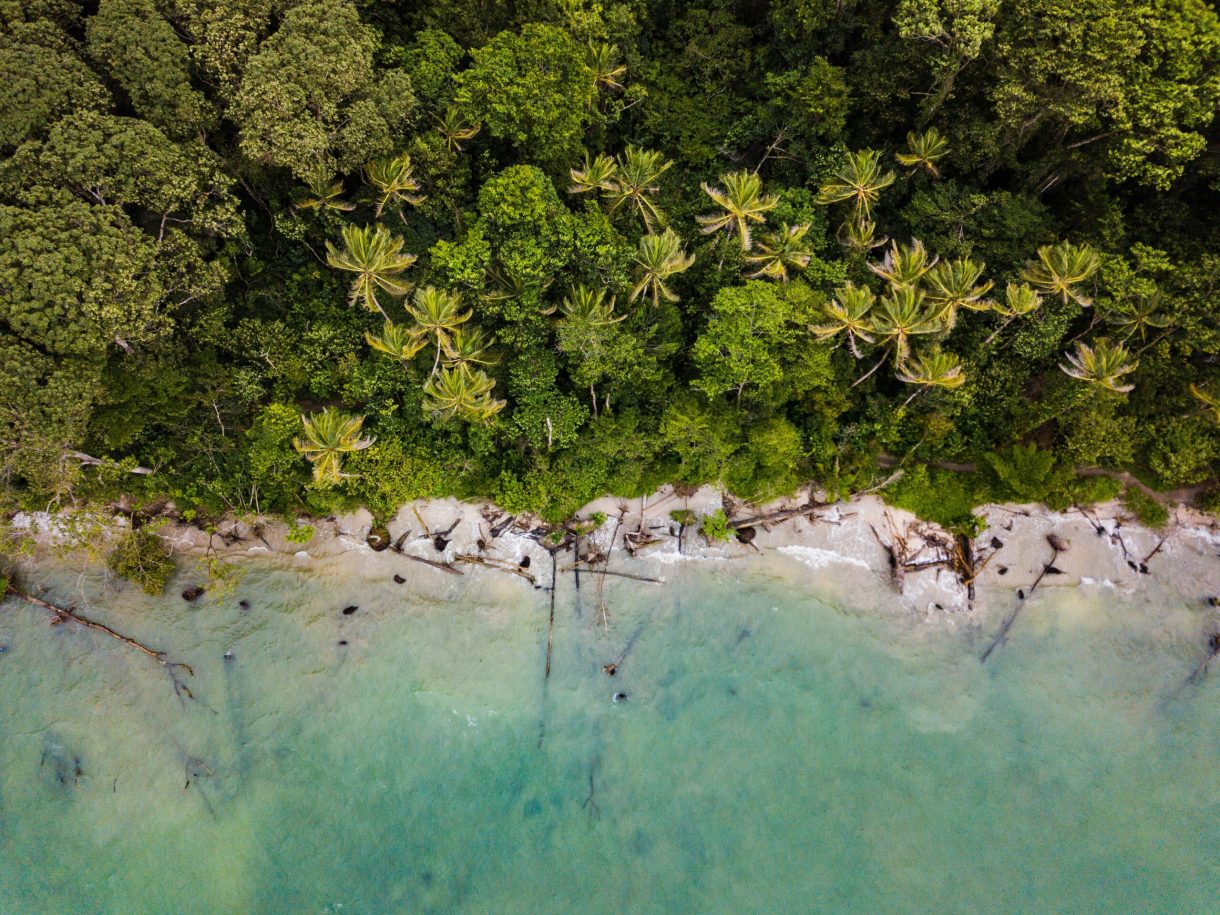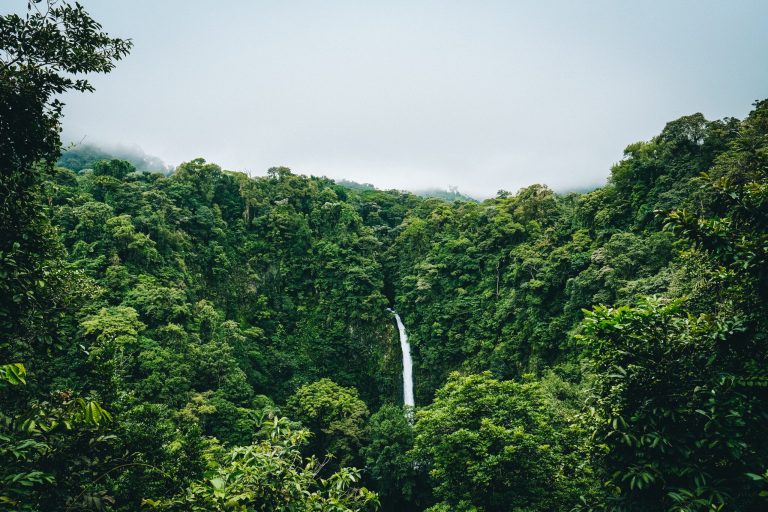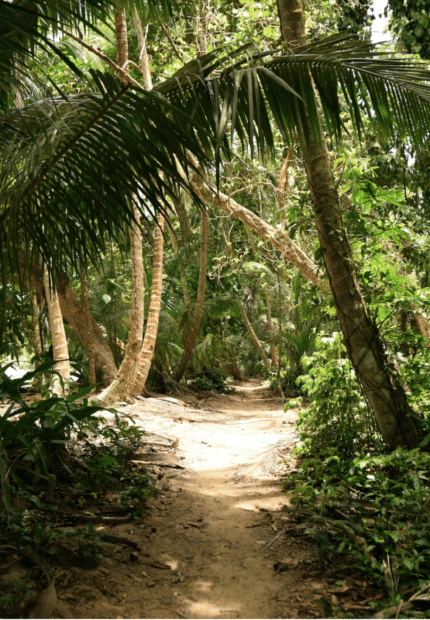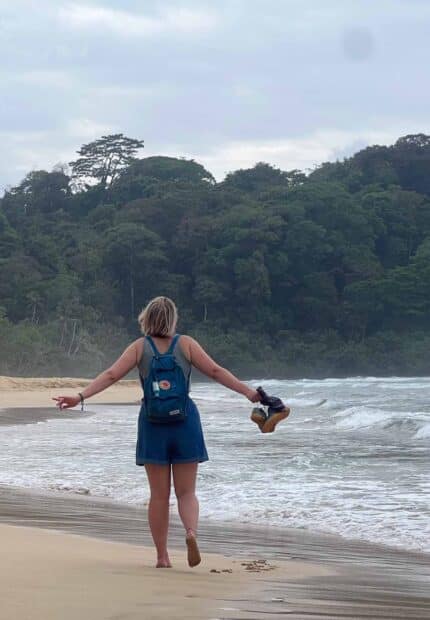
Planting Trees in Costa Rica
Costa Rica has long been celebrated as one of the greenest countries on earth. Praised for its leadership in environmental policy, it’s a wonderful destination for those looking to undertake voluntary work and do some good for our planet. Discover how one traveller offset his flight’s emissions through planting trees in Costa Rica.
Today’s post is in collaboration with Matty, the co-founder of The Travel Story Society. The Travel Story Society aims to inspire readers to try new destinations through storytelling. They also have a podcast in which they discuss travel stories with people around the world. Discoveny was recently a guest on their podcast! Have a listen here.
COSTA RICA: A 21ST CENTURY ENVIRONMENTAL LEADER
Besides being a stunning tourist location, Costa Rica is paving the way for other countries to follow in the fight against climate change. This country has some amazing environmental initiatives for those looking to travel more sustainably. I travelled to Costa Rica in 2015 as part of the World Challenge UK, a volunteering programme for young adults.
Costa Rica is one of the most biodiverse countries on the planet and is already feeling the effect of global temperature increases. The country’s officials are actively fighting against climate change, working towards becoming carbon neutral by the end of 2021, and are aiming for Net Zero Emissions by 2050.
Unlike most countries, these views and policies aren’t only spoken about at a governmental level. Instead, they are mirrored by the society they are meant to represent. Citizens see a personal responsibility to take care of the rainforest, such as Rafa, Matty’s guide for his time in Costa Rica, who really embodied the spirit of taking care of the environment we live in.

PLANTING TREES IN COSTA RICA: MATTY'S STORY
“We wanted to give back to the environment that gives the people of Costa Rica life. Our aim plant enough trees in the rainforest to offset the carbon emissions from our flight. Rafa was our guide.”
“We met at a stilted treehouse nestled in the forest. It was stunning; a paradise surrounded by tall trees on all sides but one, which had a spectacular view of the mountains. It is very common to build your own house in Costa Rica and many overlooked stunning landscapes. But most of these homemade houses were little more than tin sheds. Rafa had made a wooden palace.”
“After a quick round of introductions, Rafa took us deeper into the rainforest. A real character, he was short but stoutly built and wielding a machete larger than any knife I had seen. Although he spoke little English, he had a smile that never seemed to end and a way of communicating that let you know exactly what he wanted. He was, without a doubt, one of the friendliest men I have ever met, despite the few words we shared.”


“The place in which we planted the trees was an underwhelming clearing, tucked away in a dark corner of the forest. Rafa explained that the species we were planting were strong and would happily grow in any conditions. Planting them here would stop them from competing with the weaker trees. Planting the trees took us around two hours. It was hard labour but I really felt like we were doing something for the environment.”
IS PLANTING TREES ALWAYS THE ANSWER?
Tree planting has been celebrated as a solution to climate change because plants absorb the greenhouse gases from the atmosphere as they grow. World leaders have committed to restoring 350 million hectares of forest by 2030.
Although there’s a lot to be said for planting species in their native habitat, many of these trees are set to be planted in tropical grassy biomes. These savannas and grasslands cover large swathes of the globe, storing an estimated 30% of the world’s carbon in the soil. These biodiversity hotspots form a unique biome for plants and animals and are home to one billion people who depend on these environments for an income. Planting trees here can drive out native species and lead to streams drying up, taking water away from the locals that live there.
Additionally, trees are usually slow-growing. The trees we plant now could take decades before they start absorbing significant amounts of carbon. They still require a lot of maintenance and upkeep from local people, which takes time, money and energy. And carbon offsetting projects are not always transparent. There’s nothing to stop the trees you plant felled in the future, undoing your labour of love.

HOW YOU CAN OFFSET YOUR EMISSIONS...
Planting trees in Costa Rica opened my eyes to the fact that we need to be more responsible when we travel. Travel helps you grow as a person, but we need to balance our love for the planet with our need to save it.
HOW YOU CAN OFFSET YOUR CARBON EMISSIONS ON-THE-GO
There are so many ways to lower your carbon emissions whilst travelling. Why not try alternative forms of travel, such as taking the train instead of a short-haul flight. If you are not physically able to plant trees, you can calculate your emissions and donate to a carbon offsetting project. There are so many to pick from that you’re bound to find a cause to align with your passions.
If you want to actively volunteer for a climate change-based project, have a look for internships and programmes in your next destination. Do your research to ensure the project isn’t doing more harm than good. This guide is a great place for budding volunteers to start.
HOW YOU CAN OFFSET YOUR CARBON EMISSIONS FROM HOME
For those that want to help from home, check out this website to find out what your community are doing to help the environment and how you can get involved. If you’re looking to lower your carbon footprint, you can offset anything, from your electricity to your transport. Check out this guide for more.
“This trip was not only an amazing experience but showed us how easy it could be to make travelling carbon neutral and more environmentally friendly. Just think about it. All you have to do is to take half a day away from sightseeing, calculate how many trees you need to plant to offset the carbon emissions from your flight and find a reputable organisation to plant them with. Planting a few trees does not make you an eco-warrior, but it is a step towards a greener planet.”
Although it helps, carbon offsetting isn’t a long-term solution. If we want this world to be beautiful for future generations, we all need to make lifestyle changes to reduce our carbon footprint. Check out Discoveny guides to sustainable travel here.
We also made a podcast together about my time in Nepal! Check it out above!
Disclaimer: The information and advice provided in this blog are the author’s opinions and based on their personal experiences. All information was accurate at the time of writing. However, things can change quickly, so always double-check current conditions and guidelines before setting out. Remember, your travels and safety are your own responsibility, and this blog can not be held responsible for anything that might happen on your adventures! Always exercise caution and good judgment. Oh, and don’t forget to get travel insurance! Happy travels!
This post may contain affiliate links (yay for transparency!) This means that I will earn a small commission, at no additional cost to you, if you click the link and choose to buy the product. I only link to stuff I have personally bought and found useful and never endorse crap. Your support helps keep the site going, thank you!
Alice
Alice is a UK travel blogger who advocates sustainable travel and being more eco-conscious on a budget. She loves coffee, her houseplants and summiting mountains.
You May Also Like

What do things cost in Costa Rica?
September 7, 2023
How to Create Proof of Onward Travel in 2023
November 4, 2023
